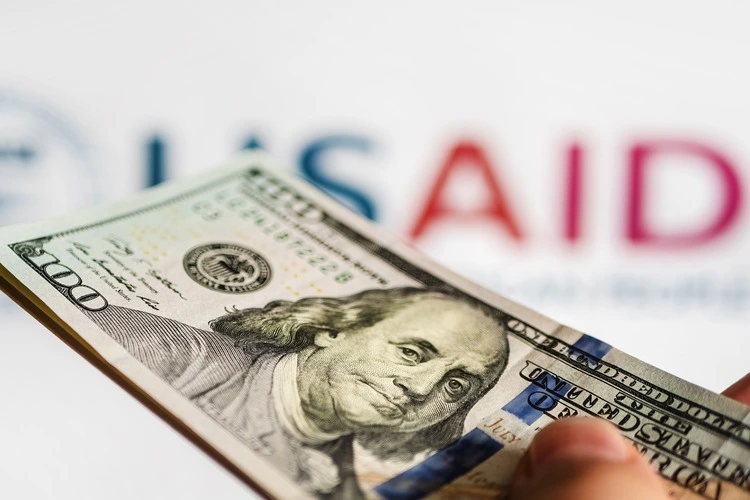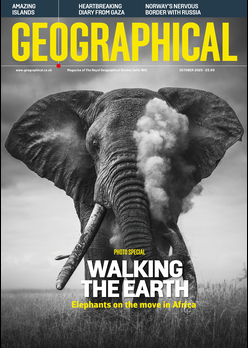
From healthcare for Afghan women to independent journalism in El Salvador, discover what activities have halted following the USAID freeze
By
This week, the Trump administration officially cancelled 83 per cent of US foreign aid contracts – a total of 5,200 contracts.
Prior to the recent cuts to USAID, more than 10,000 people worked for the organisation, with around two-thirds working overseas. Now, many have been put on leave and thousands of contractors have lost their jobs. Projects across the world have also been forced to alter or cease operations entirely.
Related reads:
Former USAID worker Wayan Vota has drawn up a spreadsheet on agreements terminated thus far following USAID cuts, beginning to paint a picture of how widespread the impacts of these financial drawbacks are.
Although not exhaustive, the list currently contains cancelled contracts totalling more than $4 billion, including agreements on a $40 million project for early years education in the Philippines, 64 election-related contracts to improve transparency and accountability within elections in countries such as Senegal, and a $130 million project to tackle healthcare in Madagascar.
As well as this, Vota’s list also details an award of almost $50 million to support accessible and quality education for children in Afghanistan has been terminated, alongside a $14.5 million award for the USAID Digital Future Cambodia project which helped to equip the nation’s youth with enterprise-driven skills to support its economy.
Here we look to the widespread impacts on the ground that pausing operations has already had across the world in just several weeks, from healthcare provisions to educational activities in all corners of the globe. This list will be regularly updated as the impact of USAID cuts on more projects comes to light.
Hospitals in refugee camps in Myanmar
Refugees living within Myanmar’s refugee camps along the Thailand border have reported all hospitals in the camps closed following Trump’s cessation of USAID. These hospitals are run by the International Rescue Committee through USAID funding.
Although Thai authorities have been able to step in and provide services in the absence of USAID funding, resources are limited.
According to a volunteer community medical worker in the Umpien refugee camp, changes occurred as soon as the USAID cut was announced. People who needed treatment were reportedly told to leave the hospital, including one patient who had an IV-drip removed by staff.
Landmine removal in Cambodia
Millions of landmines remain buried within Cambodia’s land following the devastating war within the country back in the 1970s. Last year, the US Embassy in Cambodia said it expected to spend $12 million on demining, and removing other unexploded devices in the nation in 2025 – but a USAID freeze meant that the Cambodian Mine Action Centre (CMAC) had to suspend its operations across eight provinces.
Days after the USAID pause, China announced it was providing Cambodia with a $4.4 million grant from March 1 2025, to support the project for one year.
Ukraine’s war-focused programmes and media
Many programmes and projects in Ukraine have come under immense financial pressure following the USAID cut. A project – ran by SavEd – focused on rebuilding educational facilities in frontline villages had to pause some of its construction. Along with this, SavEd had to pause its contracts with tutors who met with children unable to access schools due to the wars.
Shelters used by evacuees are also facing uncertain futures. One location used in Ukraine for evacuees is a concert hall in the eastern part of the country. Prior to the freeze, 60 per cent of the costs to run the shelter (around $7,000 USD) was being paid by the US.
News outlets have also been hit, such as Ukraïner – known for its war reports in many languages – which has announced it is scaling back its operations since the USAID cut. Dozens of its projects rely on financial support from the organisation.
‘We will no longer be able to make the series of war reports…because they are very expensive to produce,’ said Ukraïner’s founder Bohdan Logvynenko in a Facebook post. ‘To make them cheaper and stop traveling to the front line, we may have to significantly sacrifice quality.’
South Africa’s HIV/AIDS programme
With the highest number of people living with HIV in the world, South Africa’s various clinics and healthcare centres remain a vital lifeline for millions of individuals with the disease.
USAID provides financial support to the President’s Emergency Plan for Aids Relief (PEPFAR), which in turn funds these clinics – but recent cuts have already begun to impact their operations.
Some have already been closed for several weeks, while others have particular services that have stopped such as community-based testing and pre-exposure prophylaxis (a medicine used to prevent people contracting HIV).
Most HIV medication in the country is funded by the South African government, however it is likely that a drop in PEPFAR funding (due to USAID cuts) will affect the training, facilities and service delivery of HIV and AIDS programmes in the country.
Education in Mali
Prior to its freezing, USAID was Mali’s main humanitarian partner and made significant contribution to its educational activities across nine regions of the country. In the wake of conflict within Mali, hundreds of schools have been forced to close due to insecurity, with many teachers and other educational staff leaving their postings. Through its funding, USAID made significant strides to ensure education was still available for children and youth.
Back in 2018, the organisation provided $18.5 million in funding to ensure children and youth’s access to education was sustained, particularly important against the backdrop of a 2015 assessment which found just two per cent of second grade students in the country could read at their grade level. Such funding was used to train teachers in writing and reading practices, support classroom-based assessments and ensure parents, communities and businesses are aware of the importance of early-grade reading.
Now, according to TIME Magazine, this funding has ceased.
Healthcare for Afghan women
Since Trump’s pause on USAID, 30 family health houses and mobile health clinics – often the only source for women to access healthcare in remote areas – have closed in Afghanistan, according to representative of the Afghanistan Family Guidance Association Seema Ghani.
Attempts to move money between projects and fundraise to increase funds have been unsuccessful. Along with this, more than 200 members of staff – a large proportion of which are female health workers, with marginal job opportunities in the country – have been suspended.
Before the USAID funding cut, money from the organisation was planned to open a hospital for women and children. However, after talks with the Norwegian Agency for Development Cooperation, the hospital will still be opening but with funding from the Norwegian body.
University education in Malawi
All university students that were sponsored by USAID – amounting to thousands of individuals – were told by their institutions last week to either drop out, or seek alternate sources of funding to remain in school. Students from a range of universities were affected, including Lilongwe University of Agriculture and Natural Resources, Mzuzu University, Kamuzu University of Health Sciences, and the Malawi University of Science and Technology or MUST.
The Malawi government is now looking to find other sources to help students, such as international partners like the Czech Republic and Morocco, along with local partnerships in the private sector.
Contraception around the world
Since the USAID freeze was first announced on 20 January, estimates suggest around 3.8 million women have already lost access to contraceptive care. Prior to the pause, an average of 130,390 women received contraceptive care from US-funded programmes.
If the full 90-day funding freeze takes place, current projections suggest that around 11.7 million women will be left without contraception in total.
Sub-Saharan Africa will likely be severely impacted by this change as many women there rely on family planning. Without this, populations may begin to increase in a region which already experiences some of the highest birth rates worldwide, and high levels of poverty that may be exacerbated by unplanned pregnancies.
A lack of contraception also allows the spread of sexually-transmitted diseases (including HIV), not only between sexual partners but from mothers to children during pregnancy and labour.
Fighting deforestation and cocaine production in Latin America
USAID has long worked with communities in Latin America to help prevent deforestation in the Amazon due to coca farming, the raw ingredient used to make cocaine. As coca plan growers clear sections of the Amazon to make room for coca fields, large quantities of trees can be felled with disastrous consequences for the environment.
A USAID-funded project previously allowed Indigenous communities to respond to satellite-generated deforestation alerts via an app. If communities were able to verify specific areas were undergoing deforestation, based on the co-ordinates the app provided, this information was then passed onto authorities.
The project yielded successful results: around 37 per cent less tree cover loss was recorded in two years, compared to areas not covered by the project. Funding also went towards initiatives that replaced coca crops with cacao trees.
Due to USAID funding cuts, surveillance of coca farming has weakened, and concerns are being raised about the increased activity of illegal loggers and coca plant growers in the region.
Public journalism
Prior to Trump’s second inauguration in January 2025, the US government supported independent journalism across more than 30 countries (with the majority of this funding through USAID). Estimates suggest training and support for 6,200 journalists was provided, along with assistance for 707 outlets, with a total budget of $268 million.

This accounted for half of all worldwide government funding for public interest journalism, but represented just 0.004 per cent of the US government’s annual budget.
However, since the cuts, many news outlets are beginning to feel the effects of dwindling finances. Colombian news site La Silla Vacía previously had nine per cent of its funding from USAID, with USAID helping the news outlet to cover important topics such as the Amazon region. It also fears it will lose funding for fact checking for Meta, which makes up 30 per cent of its annual income
A Nicaraguan news site, Divergentes, which received USAID funding from 2020 to 2022, also remains uncertain about its future. According to editor-in-chief Néstor Arce there is a possibility of ‘drastically reduc[ing] the number of people who write for [them]‘.
Guatemalan news site Plaza Pública – which has now lost 20 per cent of its budget due to USAID cuts – has already had to cancel some reporting projects focused on migration due to tighter finances.




